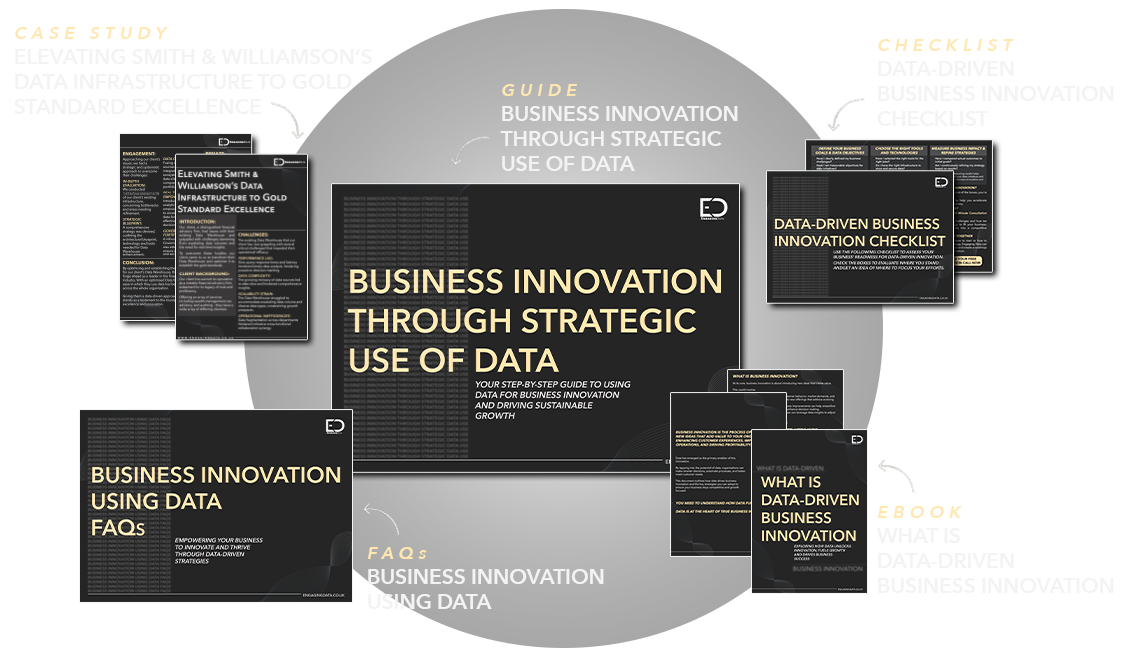
Why Innovation Fails Without the Right Data Partner
Why Innovation Fails Without the Right Data Partner
Innovation is the lifeblood of every forward-thinking organisation. It promises growth, differentiation, and futureproofing in a world that moves faster every quarter.
But while the ambition is clear, the results often fall short.
Why?
Because innovation doesn’t fail at the idea state – it fails in execution. And often, the missing like is data.
The Innovation Trap: When Good Ideas Go Nowhere
It’s easy to generate ideas.
What’s hard is turning them into scalable, sustainable solutions that work in the real world – across departments, systems, and compliance frameworks.
Many innovation programmes fall into one or more of these traps:
- Data isn’t ready: Poor quality, hard-to-access, siloed, or non-existent.
- Internal teams are overstretched: Innovation becomes ‘side-of-desk’ work.
- Pilots don’t scale: What works as proof-of-concept doesn’t survive enterprise requirements.
- Misaligned goals: Business and technical teams have different definitions of success.
The result? Missed deadlines, loss of internal confidence, and another item for the post-mortem deck.
Why Data is the Real Innovation Enabler
You can’t innovate if you can’t trust your data, access it quickly, or act on insights reliably.
Too many organisations jump into innovation projects with a thin foundation. They’re excited about AI, automation, or customer personalisation – but the building blocks are missing:
- Engineering to pipe, clean, and serve data where it’s needed.
- Governance to ensure compliance and traceability.
- Analytics that go beyond dashboards to drive decisions.
- Integration with real business processes.
Innovation without a solid data backbone is like trying to build a skyscraper on sand.
Download our 2025 Guide to Data Innovation
Discover how forward-thinking organisations are embedding data into business strategy – and how your teams can lead the way.

What the Right Data Partner Brings
A strategic data partner doesn’t just fill a resource gap – they accelerate momentum and reduce risk.
Here’s how:
1. Capability on Demand
From data engineers to analytics specialists, the right partner brings the skills you need when you need them – without lengthy hiring cycles or knowledge gaps.
2. Accelerated Delivery
No more waiting 6 months for internal alignment. An experienced partner brings proven frameworks, tools, and approaches to get value faster.
3. Collaboration – Not Handover
The right partner works with your teams, not around them. They co-design with your business and tech leaders to ensure initiatives land and scale.
4. Scalability Built-In
Partners focused on sustainable delivery don’t just build pilots – they build data products and platforms that grow with you.
Understand more about the right data partner
Read this blog post and learn the 10 tips for choosing the right data consultancy.

5 Signs You Might Need a Better Data Partner
Not sure if your current setup is holding innovation back?
Look for these red flags:
- Your pilots never make it to production
- You’re constantly firefighting data issues
- Your analytics don’t lead to action
- Every partner needs weeks to understand your domain
- Your board is questioning the ROI of innovation
What to Look for in the Right Data Partner
When choosing a partner to support your innovation agenda, look beyond CVs and buzzwords. Ask:
- Do they understand our industry and speak our language?
- Can they flex between strategic advice and hands-on delivery?
- Do they prioritise outcomes over billed hours?
- Will they work with us to build long-term capability, not just short-term fixes?
At Engaging Data, we bring data to life for ambitious businesses and leaders by delivering innovative solutions aligned to your goals.
Final Thoughts
Innovation doesn’t fail because of bad ideas.
It fails because the execution engine isn’t ready – and that engine runs on data.
If your data foundation is weak or your delivery partner isn’t pulling their weight, even the best innovation roadmap will stall.
But with the right partner, you can turn ideas into impact – faster than you think.
Ready to see what’s possible?
Let’s Talk!
In a 30-minute Data Innovation Session, with you, we will explore how you can unlock real value from your data to drive innovation within your business.









